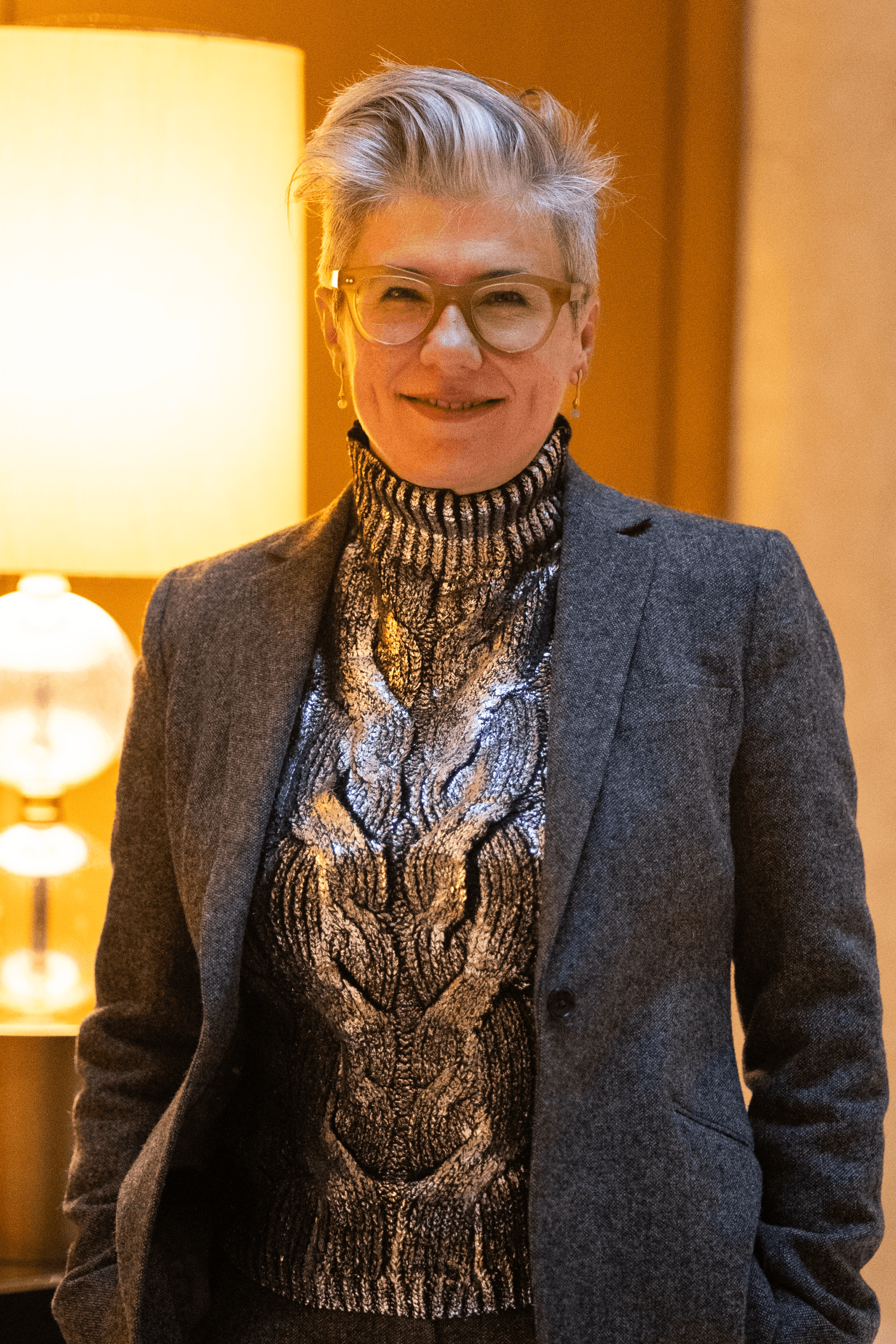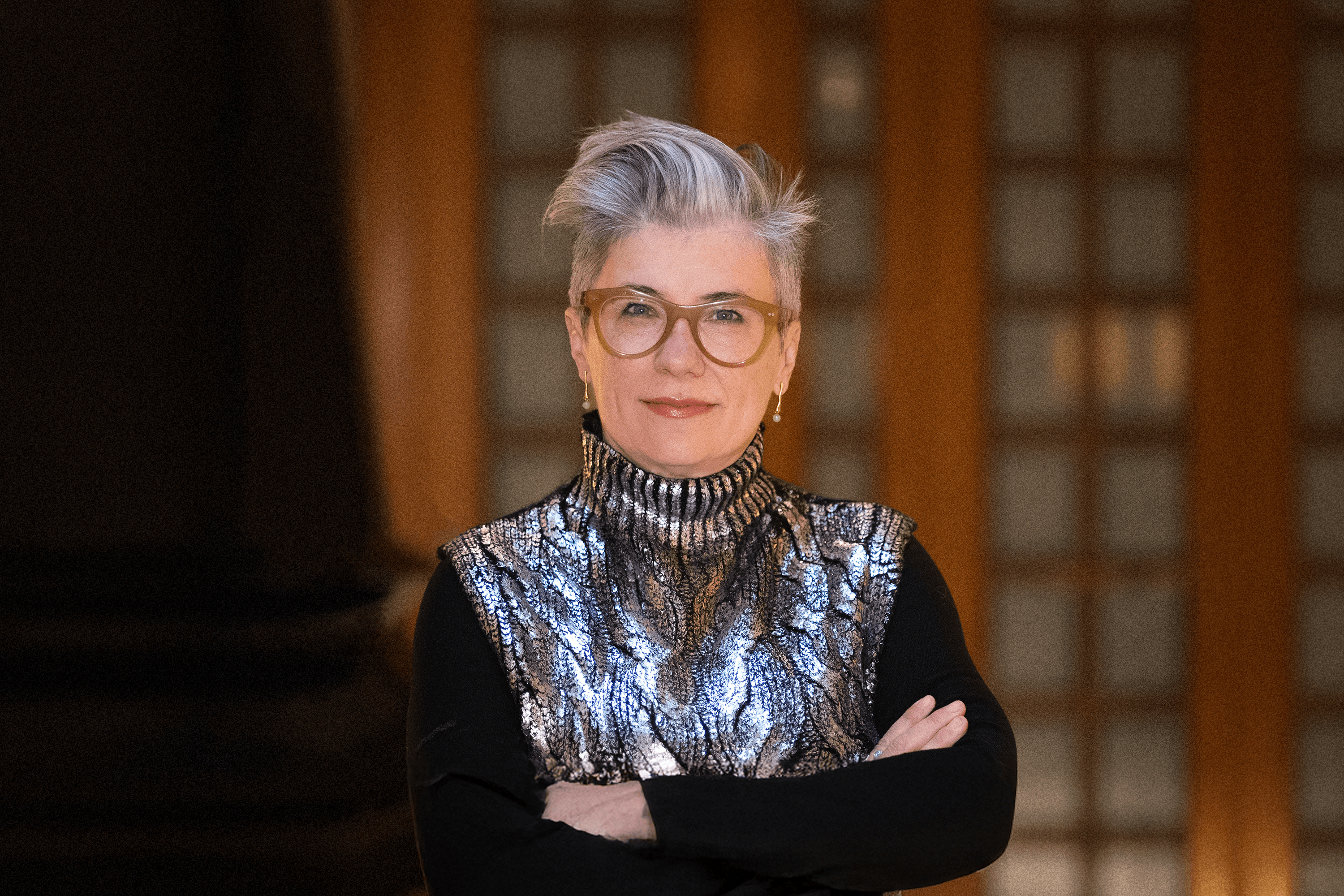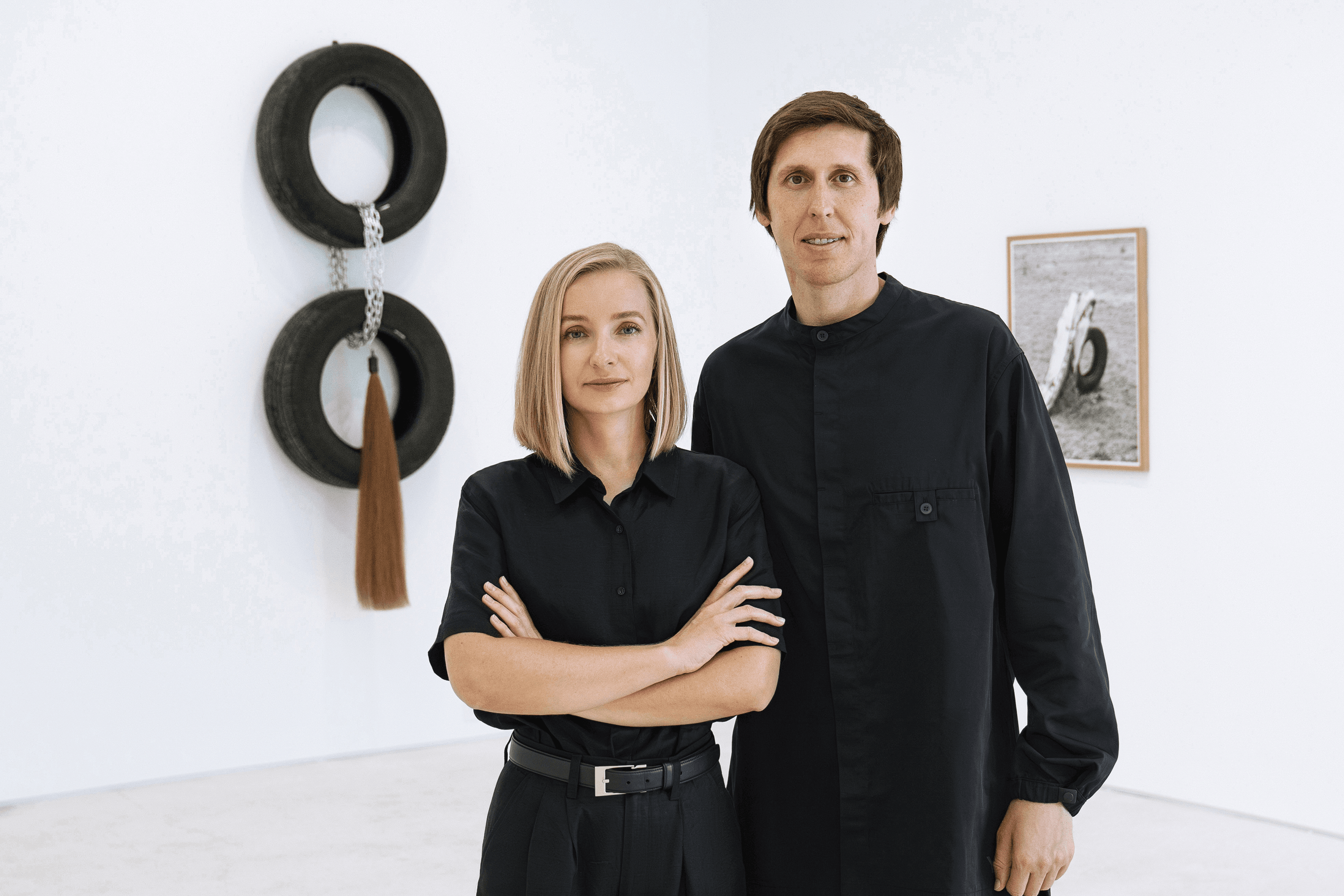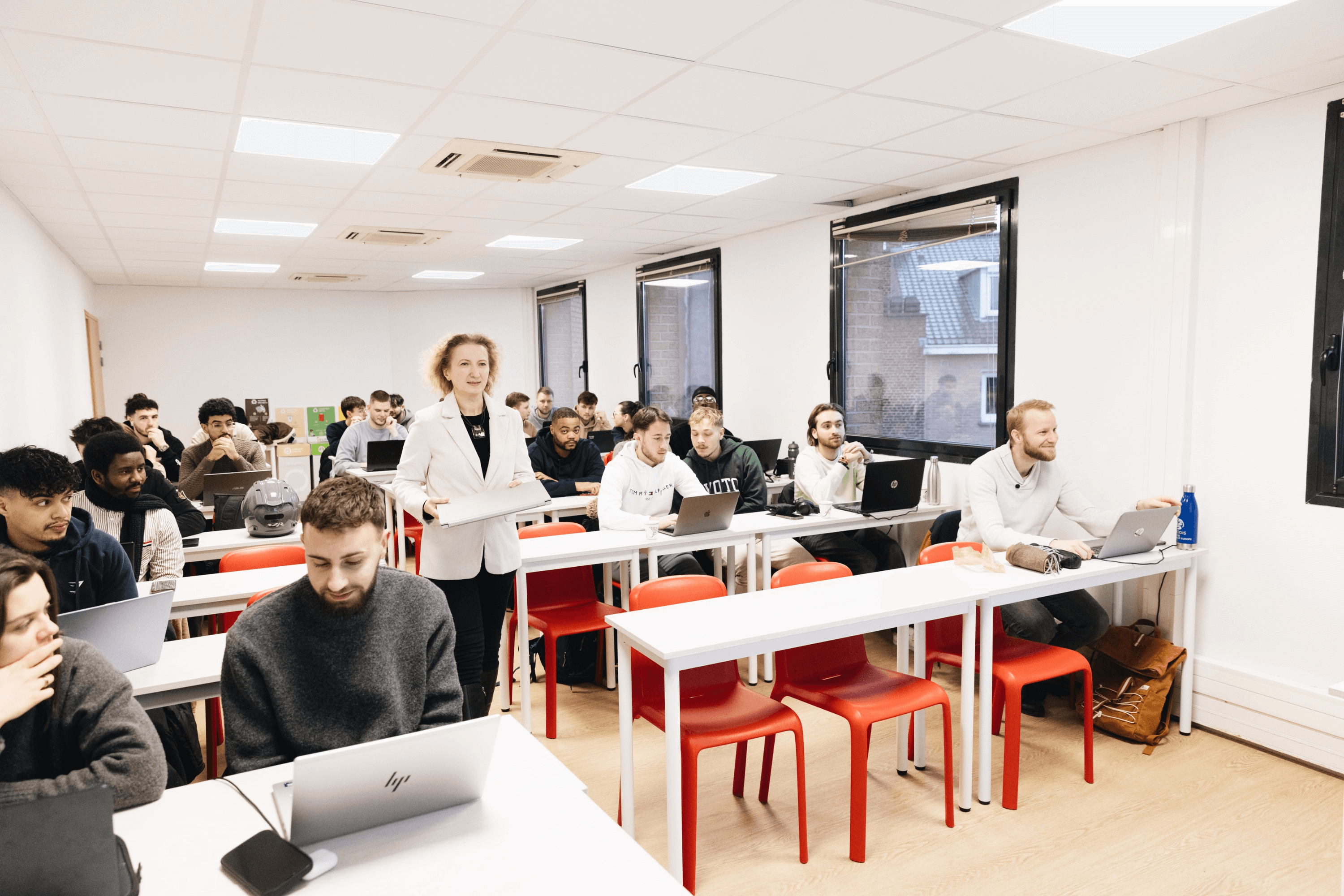Natalka Cmoc, Canada’s Ambassador to Ukraine since 2023, has a deep connection to her Ukrainian heritage and a wealth of experience in public administration and diplomacy. Journalist YBBP Masha Zhartovska and Public Servant Analyst in Municipal Government of Toronto, Dmytro Ilchuk, sat down with her to talk about Canada’s support for Ukraine during the war, the challenges faced by Ukrainian businesses, and the cultural connections between the two countries. They also touched on the unique spirit of Ukrainians, the growing global presence of Ukrainian brands, and how social media can bring people closer together.
M: Canada has always been a reliable partner for Ukraine. Since 2022, Canada has provided over 19 billion Canadian dollars in support. How do you see the future of these bilateral relations?
Canada’s support for Ukraine didn’t start with the war. I worked in Ukraine in 2013 as a counselor for technical cooperation, focusing on democracy, human rights, and media freedom. For years, Ukraine has been one of Canada’s key development programs in Europe, centered on technical cooperation.
Our support evolved with Ukraine’s needs. After the annexation of Crimea in 2014, we expanded into security programs like cybersecurity and early recovery. With the full-scale invasion in 2022, we adapted again. One of our first actions was macroeconomic support, helping Ukraine pay public servants, teachers, and healthcare workers so it could focus on security and defense. In addition, we’ve provided military and humanitarian aid, making our support broad and comprehensive.
M: You have mentioned cybersecurity and military tech. Which areas of the Ukrainian market are more interesting to Canadian investors?
Canadian investors who were already in Ukraine have stayed, and new companies have joined. Key areas of interest remain agriculture, agro-food, agricultural technology, and large-scale equipment. These sectors have been and continue to be significant for Canada.
M: Do you have examples of large Canadian investors who started investing in Ukraine during the full-scale invasion?
There’s been increased cooperation in the defense industry, though much of it may not be public. One example is Roshel. There’s also growing trade and attention to drone manufacturing and technology, with many collaborations in these areas with Ukrainian businesses.
M: How has the war affected the investment climate?
The full-scale Russian invasion was a surprise to everyone, and initially disrupted Canadian investments. It required adjustments, as many tools weren’t in place yet. Challenges included travel restrictions, especially early on, when it wasn’t safe to visit Ukraine, and the outflow of Ukrainians from the country.
Labor shortages have also been a significant issue for Ukrainian industries, particularly the lack of skilled workers. Development programs are helping address this, including reskilling women for roles like operating large-scale machinery, which they traditionally didn’t pursue in Ukraine.
Technical schools are also aiding in retraining efforts. Support comes not only from the federal level, but also from provinces. For example, Alberta has a memorandum of understanding with Ukraine, and has been active in initiatives like the energy conference in Warsaw. The Technical University of Alberta is also involved in supporting these efforts. Ukraine is adapting to new realities, including relocating businesses and workers from the East to the West, resettling, and retraining people. These adjustments are crucial for both economic and security reasons.
D: I know one of the mandates is to support Canadians in Ukraine, and provide basic services. You’ve met actors, veterans, and soldiers. I spent five years during the anti-terrorist operation in Ukraine, so I’ve maintained my connections and seen many familiar faces I used to meet before. Did you have the opportunity to advise Canadian businesses in Ukraine on overcoming the challenges of the full-scale war?
I’m very proud of the trade commissioner team in Ukraine. It includes one Canadian and locally engaged staff, who are experts in their field. They know the investment climate and key sectors very well. We’re supporting Canadian companies, especially in the food and defense industries. They continue to operate, and some are even thriving.
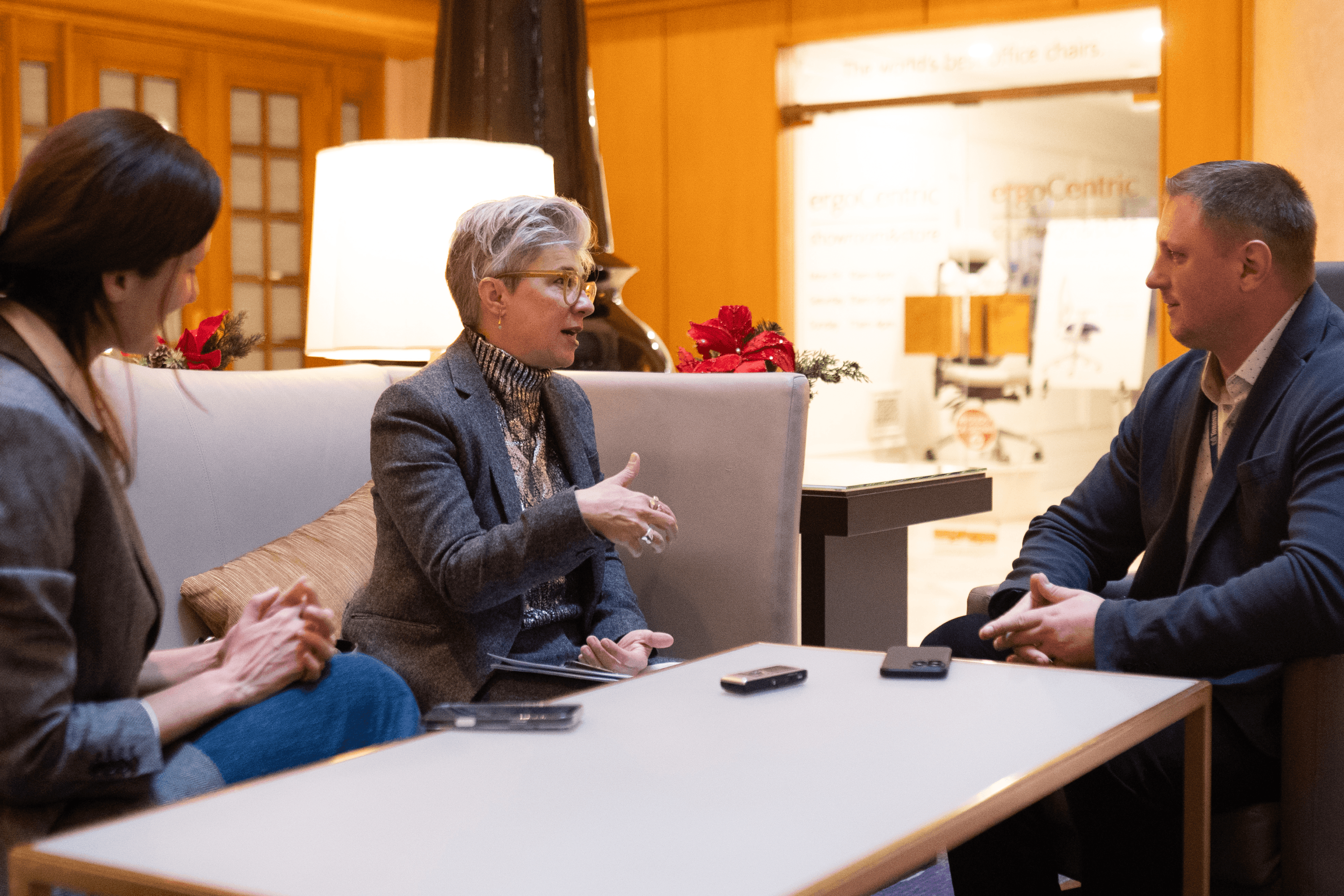
Canadian businesses have also expanded their social responsibility efforts. For example, many companies continue to pay salaries to employees who are now on the front lines and support the families of armed forces members. This speaks volumes about their commitment. They don’t have to do it, but they choose to, because it’s the right thing to do.
D: It sets an example for others in Ukraine, showing how businesses can uphold moral responsibility even during tough times.
Canadian companies are also helping internally displaced people (IDPs). They provide jobs, temporary housing, and support for those resettling in their communities. I’ve met some of these IDPs, and they feel welcome. There’s a strong sense of community as families settle, form new ties, and integrate their children into schools.
The Canadian private sector is also supporting the armed forces. Many companies, such as Fairfax, have charity initiatives to fundraise for drones and provide soldiers with essential gear, such as boots and uniforms. It’s a collective effort, and even the Canadian embassy organizes events to collect funds for soldiers or brigades.
I get very emotional seeing how Ukrainians rally together. You’ll see signs in cafes saying, «Our owner is on the front line, please support, ” and people do. They contribute to these efforts, showing incredible solidarity.
Canada also plays a leadership role internationally. For example, we co-chair Working Group 4 on returning detained civilians and children. The Minister of Foreign Affairs of Canada, Mélanie Joly, recently co-chaired a conference in Montreal, where the Montreal Pledge was announced. Over 50 countries have signed on to create safe pathways for returning detainees.
I co-chair this group with the Norwegian ambassador to Ukraine, Helene Sand Andresen, and ombudsman Dmytro Lubinets in Kyiv. I meet with returned prisoners of war, civilians who share their experiences, and families of missing or returned children. It’s vital to understand their challenges and support them. Families separated from loved ones are enduring unimaginable pain, and their resilience is deeply moving.
D: I think your approach is unique for the Canadian diplomatic corps because you’ve experienced things many ambassadors haven’t. By the way, I’m a fan of your social media. I follow your posts and work, and I think it’s great that you share updates.
In Canada, I’ve worked in municipal government for over five years, focusing on mentorship, supporting newcomers, volunteering, and community development. You’re essentially doing the same abroad, bringing Canadian values to the Ukrainian community. Have you collaborated with other embassies in Kyiv that support your ideas or join your initiatives to help Ukrainians?
Regarding social media, part of why I’m active there is to ensure Ukraine stays in the news. It’s important for Canadians to know what’s happening and how the embassy supports Ukraine. I worry about how Ukraine is portrayed—often as all doom and gloom. Striking a balance is tough. You can’t act like everything is fine because it’s not, but people need to see Ukraine’s resilience and unity. Otherwise, they might think, «Why invest there? Why support Ukraine?»
When the full-scale invasion began, many thought Ukraine would fall in a week, but it didn’t. The government stayed—that’s leadership. And where the government couldn’t be, Ukrainians stepped up, organizing and defending their communities. Volunteers joined the Armed Forces and territorial defense. The community spirit across Ukraine is incredible, and it’s something you don’t see in Russia.
On social media, I try to highlight the positives and introduce people doing amazing work in Ukraine. But yes, I’ve faced criticism for it.
M: Why?
I’ve faced criticism—like in one of my posts where people questioned why I was smiling. For example, in that photo of me in the tank, someone asked, «Why are you smiling?» My response was, «Because there’s so much to smile about with Ukrainians.» That’s what’s often missing—their incredible resilience.
The criticism goes: «Thousands, millions of people are dying. How can you smile? There’s nothing to be happy about.» But people respond positively to seeing how Ukrainians are living and persevering. I especially love featuring Ukrainian women. They are navigating immense challenges while excelling in politics, volunteering, civil society, and media.
You often hear stereotypes like, «Oh, Ukrainian women are very traditional, ” or dismissive comments about their roles. My response? „Be careful what you say.“ Yes, they take pride in their families and children, but how is that a criticism? These women are not only maintaining their families and caring for wounded soldiers—they’re also supporting their in-laws, volunteering, distributing donations, feeding communities, and stepping into leadership roles in politics and beyond.
There are also thousands of women who are in the armed forces. I have met brave women combat medics, sappers, and snipers. They are dying alongside their male comrades. They are fighting.
How can anyone dare to criticize that? I find it hard to understand. I feel very protective of Ukrainian women because they’re doing extraordinary things. They’re supporting their husbands, brothers, and fathers while leading in ways that deserve admiration, not judgment.
D: I saw you’ve recently met the Canadian Chief of Defence Staff, General Jennie Carignan.
Yes, she’s wonderful.
D: I know her from my time at the Royal Military College of Canada (RMCC), where I had the opportunity to meet her a few times. I’ve always admired her leadership within the Canadian Armed Forces (CAF), modern service model, and the Department of National Defence. She’s an inspiring figure, especially as a woman leading in such a critical role. I was curious if you could share any insights from your recent meeting with her. Did she offer any advice or suggest potential projects for Ukraine?
So, I obviously can’t get into the details, but I can assure you that we’re always looking at what more we can do to support. I am proud to have been part of the team to set up the original Operation UNIFIER in 2015 as a response to the annexation of Crimea, and it’s something Canada is sincerely proud of and deeply committed to continuing.
Canada has really taken the lead in supporting security forces—not just the military—through training and mentoring. It’s always about understanding what Ukrainians need and figuring out how we can add value. We adjust our approach as those needs evolve. For example, we’re also involved in pilot training. I think Canada responds quickly and strives to be a reliable partner for Ukraine. There’s a strong, trusted partnership between our militaries. Ukrainians are incredibly smart, entrepreneurial, and quick to adapt—they absorb knowledge like sponges. Now, we’ve transitioned to more of a «train-the-trainer» model.
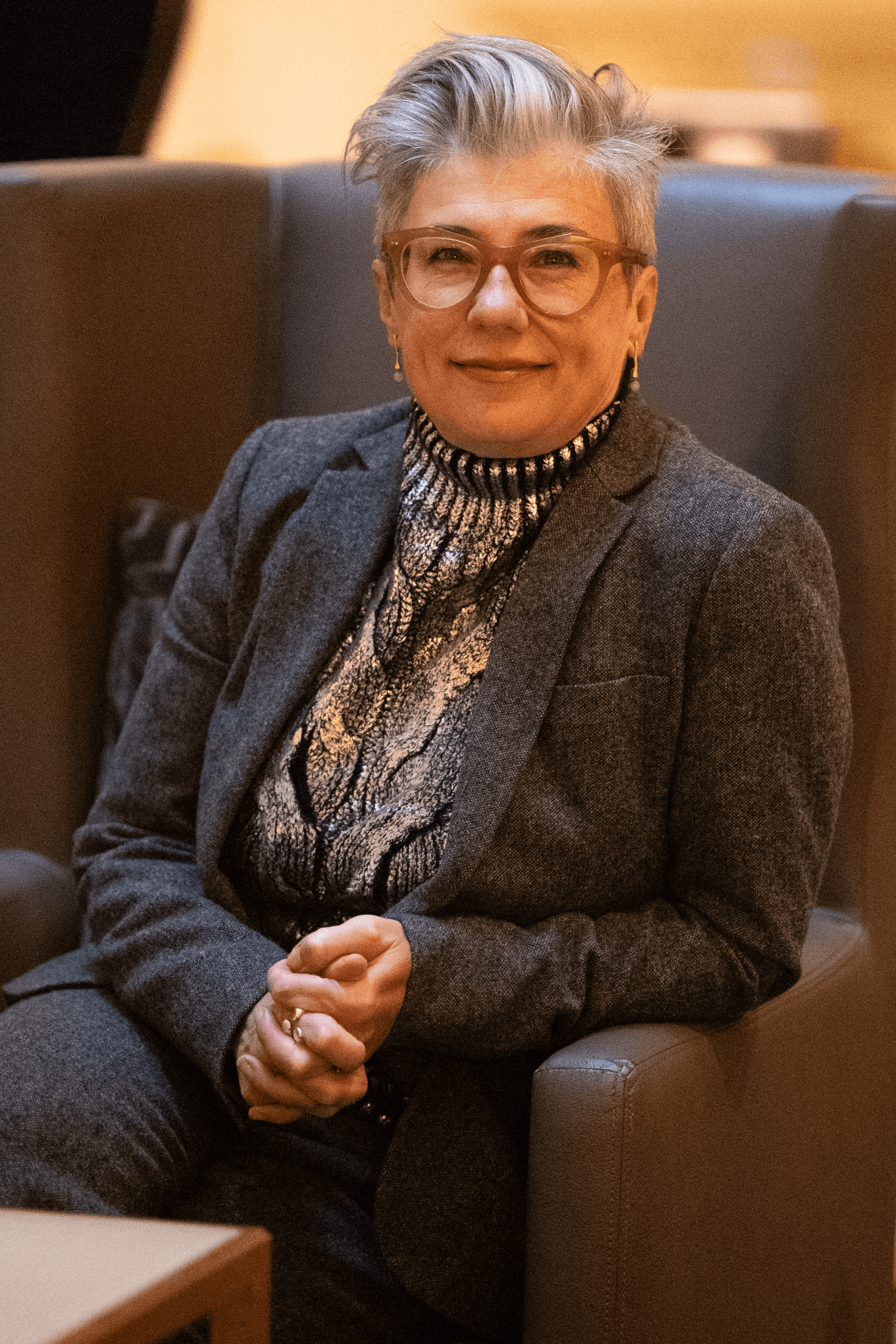
D: To multiply the effort?Yes, exactly. The goal is for Ukrainians to take on most of the training. We focus on enhancing the skills of their trainers, who then pass that knowledge on. It’s absolutely a multiplier effect. They can also operate in areas where Canada cannot easily go. For instance, it’s challenging to move soldiers far from the front line or out of the country. By being selective about how many we train directly, we can achieve a much greater impact through the «train-the-trainer» model, as it allows the knowledge to spread and continue in various regions.
D: We need more people in Canada who want to be involved and project their values and career realization within the CAF and security services, but for the last decade, the military isn’t always seen as something appealing for many citizens and residents of Canada—more like, «No, that’s not for me anymore.» But we do have the Canadian Rangers , who are a part of the CAF Reserves, working in remote, isolated, and coastal regions of Canada. Programs for Indigenous Peoples and many other similar programs in Canada demonstrate great collaboration between the military, government, and communities. It reminds me of the team efforts between Ukrainian volunteers, the community, and the Ukrainian Armed Forces (UAF) that represent a whole strong, undefeated force. Your experience and the stories you’ve heard from Ukraine about how people self-mobilize and become volunteers could be helpful in promoting interest in the CAF.
Absolutely. I think that’s a very important point. Even Ukraine is now figuring out how to present its armed forces as a professional choice—a viable career path. Not just because of the war, but as a professional field offering a wide range of opportunities within the military.
D: A long-term investment in learning and development.
Exactly, and I think that’s a great area to focus on. It’s the same challenge we face in Canada, as you pointed out, and it’s great to see Ukraine actively recruiting women as well.
D: I saw that you met Yuliia Paievska (Taira).
Yes, I’ve met Taira and a few others.
D: Have you met anyone from the Da Vinci Battalion?
Yes, I’ve met a few. I also met women snipers, and they’re excellent. From what I’ve heard, women make fantastic snipers. Gender doesn’t play a role in this; in fact, some male trainers say it’s sometimes easier to train women because they can control their adrenaline and calm their breathing more quickly.
D: Given your experience, how do you think we can encourage more young people to view the military as a professional career and a community-focused opportunity, rather than just associating military service only with traditional notions of war?
I’ve met some incredible wounded soldiers in Ukraine, including amputees, and their resilience is truly inspiring. When I ask them the famous question, «What do you want to do after this?» they often reply, «I have to go back.» They’ve built such a strong sense of camaraderie and refer to each other as family, supporting one another through everything. Many of them are determined to return and contribute, whether on the front lines or in other ways.
Ukraine is now addressing the broader challenge of supporting the large number of wounded individuals. These soldiers can significantly contribute to the economy and society, but it’s essential to remove barriers that might prevent them from doing so. I had the opportunity to present the Canadian Universal Accessibility model to the First Lady, Olena Zelenska, at her request. The Ukrainian government is actively considering how to create a barrier-free environment, whether through accessible physical infrastructure or inclusive policies.
The goal is to ensure these individuals aren’t confined to their apartments but are integrated back into the community and workforce. Roles like motivational speaking, for instance, can be incredibly impactful. There’s an important space for them to inspire and lead in various ways.
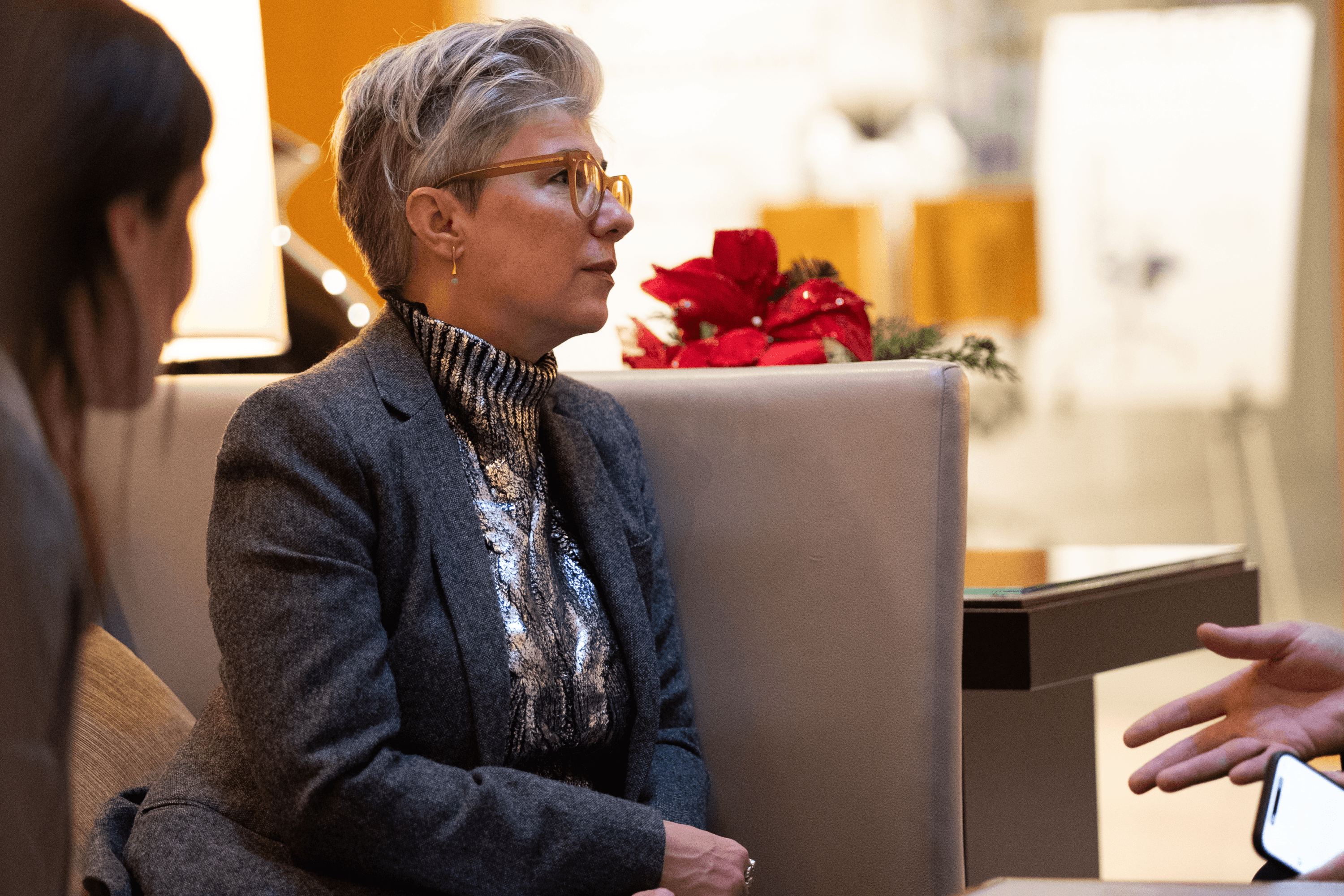
D: I feel Ukraine lacks an efficient structure for using its available resources compared to Canada, which is wealthier. In fact, the Canadian veteran community possesses strong connections, with government and community resources like veteran hubs, research volunteer centers, and universities.
There’s a gap between Ukraine and Canada, and we need to bring people together to share ideas and good practices. Since I joined RMCC in 2021, I have been trying to get involved and encourage my fellow members to contribute to Ukrainian assistance development, but I feel it doesn’t go so far because this issue needs more direct collaboration between military members on both sides.
Ukraine lacks knowledge of structure and efficient application of the expertise and lessons learned across its modern professional military society, but the US and Canada have a huge, solid experience in this direction, including veteran rehabilitation, soldier and officer community development, and positive collaboration with civilian members that could help the UAF.
Yes, Senator General Romeo Dallaire and his spouse, Marie-Claude Michaud, a psychologist, were in Ukraine recently. I met with him there, and we discussed this issue in detail. I know he’s looking into it. Senator Stan Kutcher, Senator Rebecca Patterson, and other Canadian senators are also exploring ways to promote mental health for Ukrainians, particularly focusing on the care they refer to as «from cradle to grave», and how the Canadian model can support that.
General Dallaire was very open about his own journey with PTSD and emphasized the need to be prepared for it. Families also need support. How do we address this? How do we recognize it? How do we eliminate the stigma?
You’re right—this requires a systemic approach. I believe Canada is well-positioned to help in this area, and we’re currently exploring some options. As I mentioned, some key senators are working on this.
M: For instance, Canadian expertise could support Ukrainian military forces, while Ukrainian businesses could benefit from establishing new partnerships in Canada. How do you envision these connections evolving, and what role do you play in fostering these collaborations?
I’ve helped with areas such as organizing virtual meetings, and I’m happy to continue offering this support. For example, Canadian companies have reached out to me saying, «These are the areas I’m interested in. Could you help me connect with someone?» We’ve set up virtual platforms where we answer questions, and the conversation continues from there. I see my role as a relationship builder—once they’re connected, it’s up to them to take it forward.
M: What are some of the challenges Ukrainian businesses face when trying to enter the Canadian market, and why has the process been slow for them?
They’re trying, and that’s wonderful. Perhaps there should be more platforms that provide essential information like, «This is what you need to know» and «These are the tools you should become familiar with.» I know about money-connecting-people initiatives in Ukraine that enhance civil resistance and teamwork. For example, I can draw your attention to one case: the magazine Business Woman PRO and its founder, Ania Krysiuk. One project I find promising is one she’s considering, and I’m thinking of exploring it with her while also trying to involve others. She’s looking to create a business protocol document to help Ukrainian businesses navigate cultural and business diplomacy in Canada. I truly believe those Ukrainian examples are great lessons for all Western democracies.
D: Yes, I agree with this point. For example, in North America, there are plenty of government and community resources for many types of business and cultural actors who can apply this material to find networking and mentorship opportunities, as well as structured services and programs that assist with starting new initiatives or businesses, and overcoming potential cultural barriers and real-world obstacles. That’s important, but I’m talking about something a bit different than business protocol. It’s more about diplomacy in business. It’s about how to understand Ukrainian life and business styles in new markets and client surfaces.
Yes, how to relate to them, and the same goes for Ukrainians here. For example, gift-giving.
D: Yeah, it’s different styles.
Very different, right? I’ve seen this in action. Both sides want the relationship, but then they misstep. It’s awkward, but the intentions are good. If they had just known a bit about each other’s values, they could have adjusted. These little things matter, especially with a language barrier. You can see the good intentions behind their gestures, but sometimes there’s an intercultural misstep.
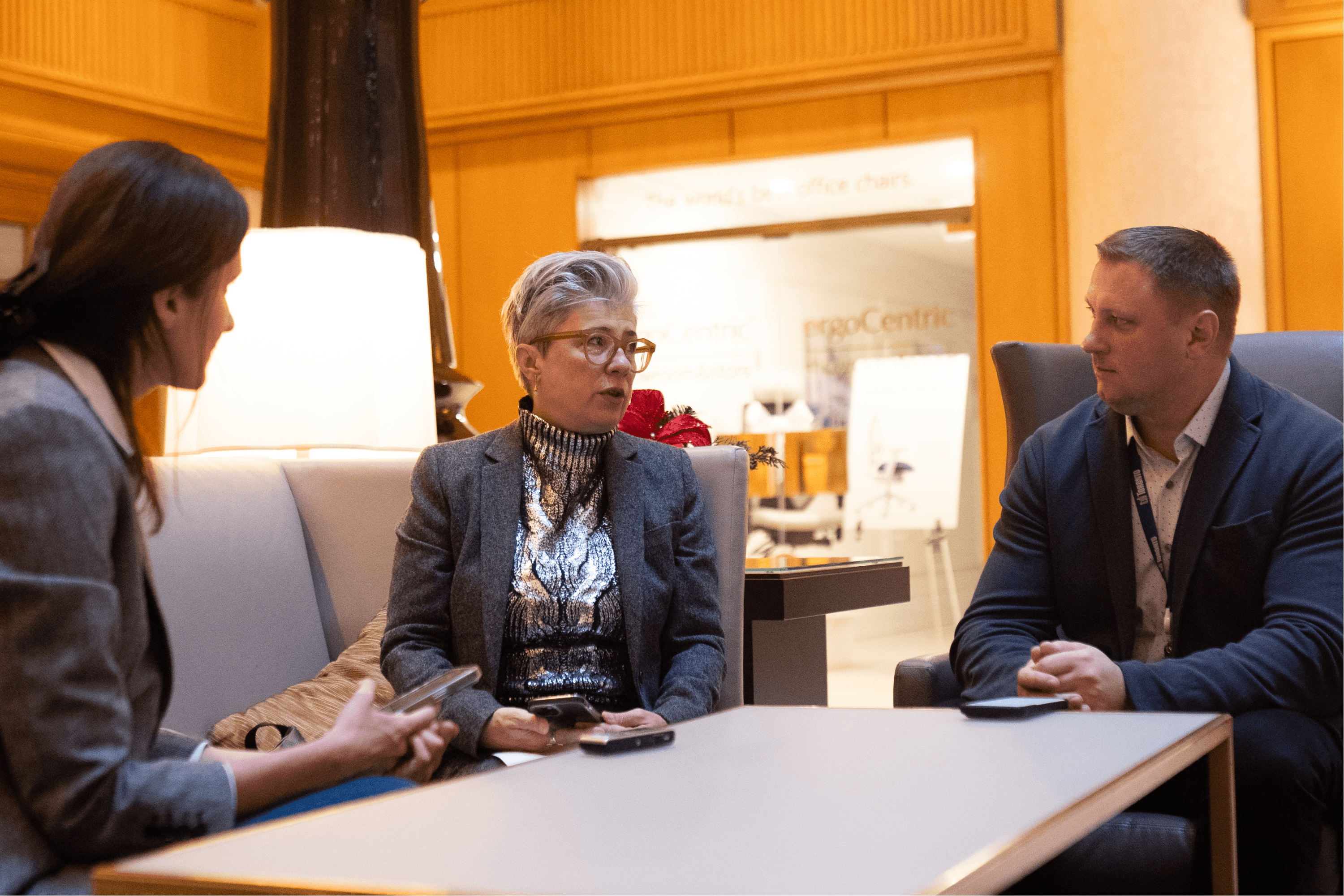
D: I appreciate the idea of showing successful Ukrainians and their careers and businesses in Canada. Don’t we agree that this view model can change the global perception of Ukrainians as only a labor force or from being seen as a third-world country, and demonstrate Ukrainian success, unique skills, and modern expertise? What I see as important, as a person from a government system, is sharing valuable knowledge and connecting people with available opportunities that definitely remove barriers, limit losses, and open necessary doors.
For instance, since COVID happened, I started working as a first responder in health and long-term care, including bridging civic and business societies in my neighborhood incentives, government support and funding services. As a result of those efforts, I am pleased to admit many small businesses survived. The same example applies to national media covering business stories that describe common life challenges in Canada, like potential bankruptcy, staff shortages, bureaucracy, and language barriers. To say that, I want to highlight the importance of having more people in public service who can voluntarily play a connecting role for those in need. Am I right?
Yes. So, it’s such a good initiative for public service recipients.
M: Do you have some advice for Ukrainian companies who want to enter the Canadian market, especially regarding multiculturalism or Canada in general?
One thing that might surprise people is how many Canadians have Ukrainian heritage, but their names are things like John Smith. You might never know. There are many people with Ukrainian roots, even distantly. It’s much more widespread than people realize. Also, I’ve noticed that people of Jewish descent from Ukraine are now a significant strength in Canada. This is something we need to focus on and reinforce, bringing that community together. Ukraine, though not as multicultural as Canada, is still very diverse, including religious denominations. The biggest groups are Ukrainian Orthodox and Greek Catholic, but there are also many mosques, synagogues, and Baptist churches. It shows that Ukraine is multi-denominational, and its people work together very effectively as a community. That’s an important message to share.
M: Especially in places like Kharkiv and Odessa.
Yes, and Dnipro too. I love Dnipro. I was deeply impressed by the work of the rabbis I met there. What they do for the community is incredible. It’s not just for their own community—they aim to make the whole city a safe place. They have this huge building open to everyone, with community centers and resources. It’s a lively place, full of energy of support and human interaction. Rabbi Raphaeil Rutman in Kyiv is the executive chairman of the Federation of Jewish Communities of Ukraine. He is an incredible leader, and the work that he does to support the more vulnerable people throughout Ukraine is noteworthy.
D: This people unity isn’t well known in Canada.
And that’s something we need to showcase—what Ukraine really is, not the distorted narrative often portrayed by Russia. I don’t want to focus on counter-narratives, but we need to highlight Ukraine’s true identity, especially in terms of smaller communities, individual people, and projects. There are so many false stereotypes, many of them narrow-minded.
M: I see. By the way, may you tell me more about the mentioned stereotypes that impact those people, please?
I think there’s a misconception that only Ukrainian Canadians are interested in supporting Ukraine, but that’s false. I’d say it’s Canadians in general because it aligns with our life values and community development. Most Canadians come from somewhere else, and many came here because they were repressed economically, socially, or through human rights violations that forced many to leave their homelands and seek better life systems.
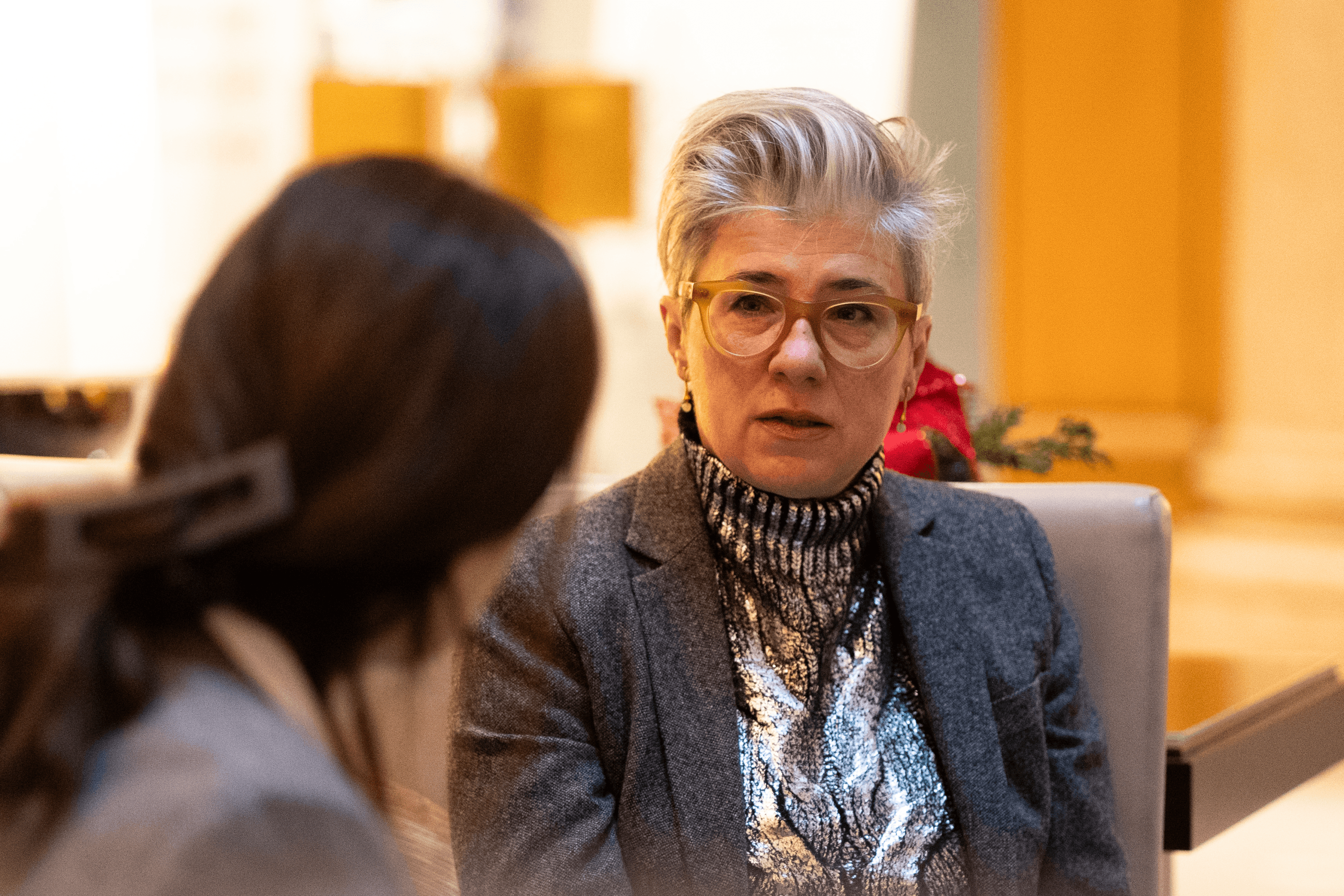
D: I can say this view clearly underlies a mutual empathy.
That’s a beautiful way to describe it. And that crosses cultures and languages. «I know what it’s like to come to a new country and start over. Let me help you.» That’s something beautiful about Canada. People often have this image of Ukraine as downtrodden, but in reality, it’s entrepreneurial and innovative. In the past year, 50% of small and medium enterprises were started by women. Again, I’m focusing on women — they take risks. Yes, it’s a fact. They take risks, start businesses, and those businesses are what are actually keeping the economy going. It’s not the large industries; it’s the small businesses. I’d love for that to be shared more in Canada.
So, if Canadians have an idea, Ukraine is a great place to test the market and solve problems. Ukrainians take a problem, come up with ideas, and prototype solutions. Ukraine is fantastic for prototyping and testing, and that’s something I’d love Canadians to realize — what they could gain from partnering with Ukrainian enterprises and creating a really competitive, unique product.
D: Well, to open more in this building direction, what is your opinion on what skills and work approaches Ukrainians should review and adopt to the local side in Canada to be able to build a good partnership and improve business reputation alongside Canadians?
It’s hard to say what they shouldn’t do, but what they are doing well—especially those who have come since the full-scale invasion—is impressive. I’m amazed at how they’re integrating into communities across Canada. They’re not just settling in Toronto and Vancouver, although many are there, but they’re spreading out. For example, I stopped at a bakery, Café Vdoma, in a smaller community while driving between Toronto and Ottawa on my last trip. They’ve really integrated into that community. They’ve decided to move here and are connecting with other Canadians and Ukrainians in the area. They’re a great example of how it’s done, and they’re receiving a lot of support. It’s not about what they shouldn’t do—it’s more about personal differences. Often, issues arise not because of ethnicity or gender, but simply because of personality.
One sensitive issue I’ve noticed is language. Some may feel they should speak Ukrainian, but it’s tough because their children are attending Ukrainian schools in Canada. These schools work hard to preserve the Ukrainian language, which is important, but it can be challenging. They are absolutely welcome here, but language can be a tricky topic.
M: You are known for supporting Ukrainian brands and often share this on your Facebook. This can be seen as part of cultural diplomacy. Which Ukrainian brands do you particularly like?
The big brands are getting international recognition. I love watching shows like Emily in Paris, where you see Ruslan Baginskiy hats—those are beautiful. It’s great that they’ve reached that level, where a certain group of people can afford them. But I can’t afford Gucci either. I love brands like Gunia Project, Gushka, Etnodim, and Atelier Margo. I particularly enjoy supporting smaller brands. Some stores feature just one or two pieces from various smaller Ukrainian designers. Those are my favorites because they’re taking risks. One of my favorite pieces of clothing is a pair of Dodo Socks with the illustration of Ukrainian artist Alla Horska. I wore them to the Ukrainian Women’s Congress.
D: We often observe your fashion preference for wearing things made by Ukrainian fashion creators, and I must admit you look remarkably well. It additionally markets Ukrainian fashion views brightly to your western colleagues. You’re not just representing Canada as an Ambassador—you’re a cultural leader and a Ukrainian fashion lover, who is opening Ukrainian traditions to the world and building bridges between international communities.
It’s not part of my job—it’s just something I want to do. I like to think of myself as an ambassador of Canadians. You know what I enjoy the most? Talking with students. If students, especially in Ukraine, ask me for an interview, I’ll always say yes. Supporting students is so rewarding.
M: I am volunteering for the Kyiv-Mohyla Foundation of Canada. Students from Kyiv-Mohyla Academy participated in an exchange program with the University of Toronto, and we had the chance to meet with them. They are truly inspiring. I’ve met 21-year-olds who apply for grants and renovate entire floors of buildings to house IDPs. They’re just 21 or younger.
D: Didn’t you find that Ukrainian students, in the majority, are already so mature?They’re full of energy and stepping into leadership roles. There’s a misconception that Ukrainian students are passive or overly deferential, but that couldn’t be further from the truth. The students I’ve met are respectful but bold, breaking barriers and even pushing their government to improve.
